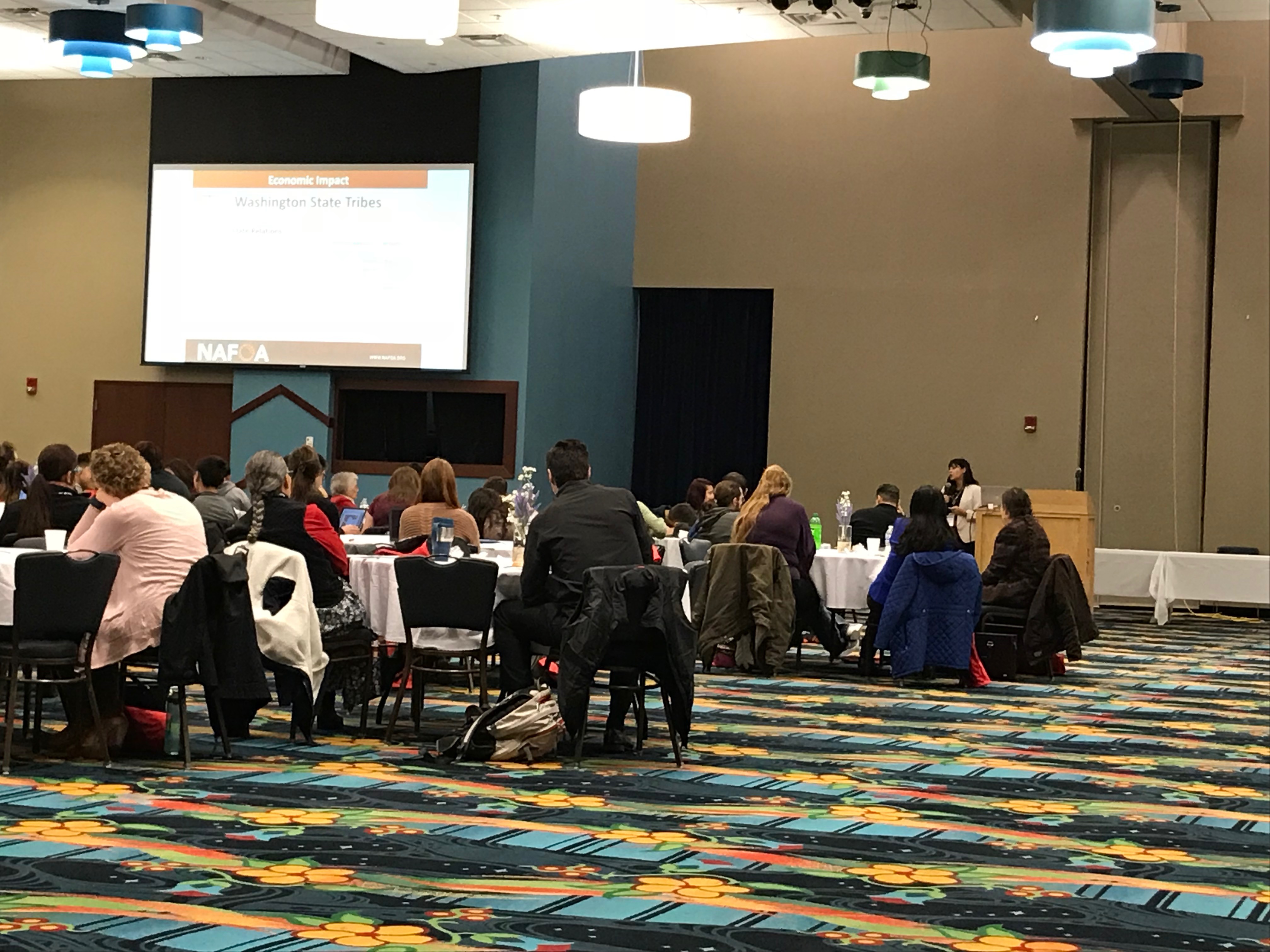The Journey of a Champion Fancy Shawl Dancer
Bobbi Lynn Frederick provided the attendees with a wonderful presentation while we enjoyed lunch. She spoke passionately about her journey as a fancy shawl dancer and artist.
Ms. Frederick is a Haskell Indian Nations University alumnus and works at the Turtle Mountain Community College, teaching a course in beadwork. She has been a fancy shawl dancer, which is a style of dancing, since she was very young. She also credited the drum groups that she's heard and how they've inspired her dancing. Bobbi gave some great history about pow wows that I was not aware of; for example, the structure of pow wows was influenced by rodeos and has evolved to include a grand entry where all the flags and dancers enter at once. If you haven't seen a pow wow grand entry before, it is a beautiful amalgam of dancers, young and old. Additionally, pow wows have competitions for various age groups and style of dance, and Bobbi gave a great overview of how pow wows and the dancing has evolved over time to become the pow wow many of us are familiar with today. She has participated in many different kinds of competitions, including endurance contests, which she described as "dancing marathons," with songs played back-to-back until there is one dancer left. One interesting point she made about pow wow competitions was how different they are than other types of competition because they all see each other as family, encouraging and supporting each other with no ill-feelings toward one another's success.
She has traveled far and wide to participate in pow wows, do special performances, and has joined a dance troupe (Dakota Ojibwe Dance Troupe). I really enjoyed Bobbi's perspective on why she dances and the work she takes to incorporate culture into her work and one of her reasons for doing what she does is because it is the best way she knows to preserve the culture. Bobbi became emotional when talking about the important work that many in the community are taking to promote health. Something that I really resonated with was when she spoke candidly about being scared of offending someone or getting something wrong in the work she's doing. I think many of us are afraid of that when we go about our work but Bobbi pointed out that all of us are just doing the best that we can in trying to improve the lives of our people. Bobbi is a very humble young woman filling a space in her community that is vitally needed and her passion was inspiring to all in attendance.
If you are not at the conference, you will be missing Bobbi's special dance presentation that she is doing for the lucky attendees of the conference later this evening!




